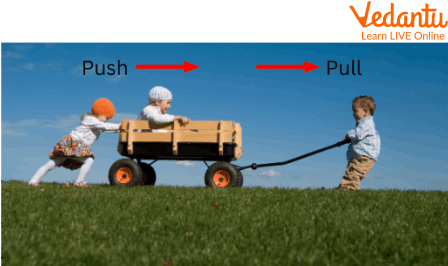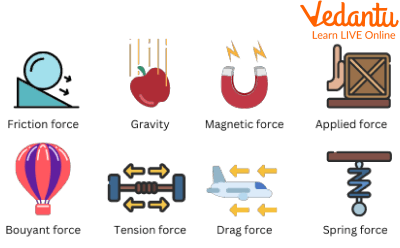




Overview of Force
Hey kids, today we are going to shed light on a very significant concept that we apply and use in daily life but fail in paying attention to it. Let’s try to understand this with an example. For example, When you push your refrigerator in a specific direction, you use a great amount of energy and power in doing so. There’s a term for this action, and it is known as Force. On that note, let’s go further and try to understand and study what is force for kids - the meaning, types of forces for kids, uses of forces and much more.
What is Force for Kids?
In simplified terms, the force can be defined as a pull or a push we exert on an object or a person to complete a certain task. A force is said to have occurred when two different objects come in direct contact and one object has impacted the other object. When both the objects expand or move away, the force stops too.
Force is always taking place around us even when we are pushing a table for better adjustment. Look at the picture below to understand the concept effectively.

A Visual of Applied Force
Types of Forces for Kids
Now that we have studied force, let’s jump on its types. Force is divided into two major types: Contact forces and Field forces.
Contact Forces - This occurs when two objects touch or connect. It can also be applied differently. For example, contact forces occur when a person is pulling a wagon, kicking a football and dropping the ball.
Field Forces - This occurs when two objects contract or interact without being in contact with each other. This type of force can create a push or pull effect even from a distance. Gravity and Magnetism are field forces. Field force examples - The gravitational force pulls the apple towards the ground when it is falling from a tree. Similarly, a magnet placed near paper clips attracts the clips because of magnetic force.

Types of Forces
Uses of Forces and Measurement Aspect - How are Forces Measured?
Uses:
Force can cause movement.
Change the shape of an object and accelerate or fluctuate the speed of an object.
It is useful as it can give us an approximate idea of the amount of intensity or effort while applying force.
Measurement: Newton is a unit used by scientists around the world to measure and evaluate force. This unit measures the force required to accelerate, fluctuate or speed up objects. Pound force is a unit also used to measure force.
Laws of Motion Associated with Force
A renowned English Scientist, Issac Newton discovered and developed a theory revolving three laws of motion and force. Let’s study these three basic Laws as they are mentioned below as follows:
1st Law - The First Law of motion states that the motion of an object is unchangeable until it is pushed or pulled by a force.
2nd Law - It states that when force is applied to an object, it would make the object accelerate and speed up in the same direction as the force is moving.
3rd Law - When a particular force is applied to an object, known as action, the object will exert an equal and opposite force, known as a reaction.

Laws of Motion by Newton
Summary
From the article What is force for kids, we have learnt various aspects revolving around the force. We learnt about force, which is a push or a pull we apply on an object. Then we learnt about two types of forces - Contact and Field force with appropriate examples. We have covered the major uses of force and how it is beneficial in our daily lives. We discovered that Force is measured by Newton. Lastly, we studied the three major laws of motion proposed by Issac Newton which was a significant contribution to Physics as a discipline. We hope you enjoyed reading this article, in case of any other doubts feel free to ask in the comments.
FAQs on Forces for Kids
1. What is the formula of Force?
F = ma,
F = the net force
m = mass
a = acceleration
2. How can I calculate the force acting on an object?
The acceleration and force are constants in any equation relating to motion, meaning they must be known for the equation to be solved for anything else (the velocity, displacement, or time). We can determine the number of equations that relate these two quantities including F = ma
3. What is the function of the law of Newton's third law?
If object A applies a force to object B, then object B must apply a force to object A in the opposite direction and of equal strength. This law shows a symmetry in nature where forces always occur in pairs and one body cannot exert a force on another without experiencing a force itself.









